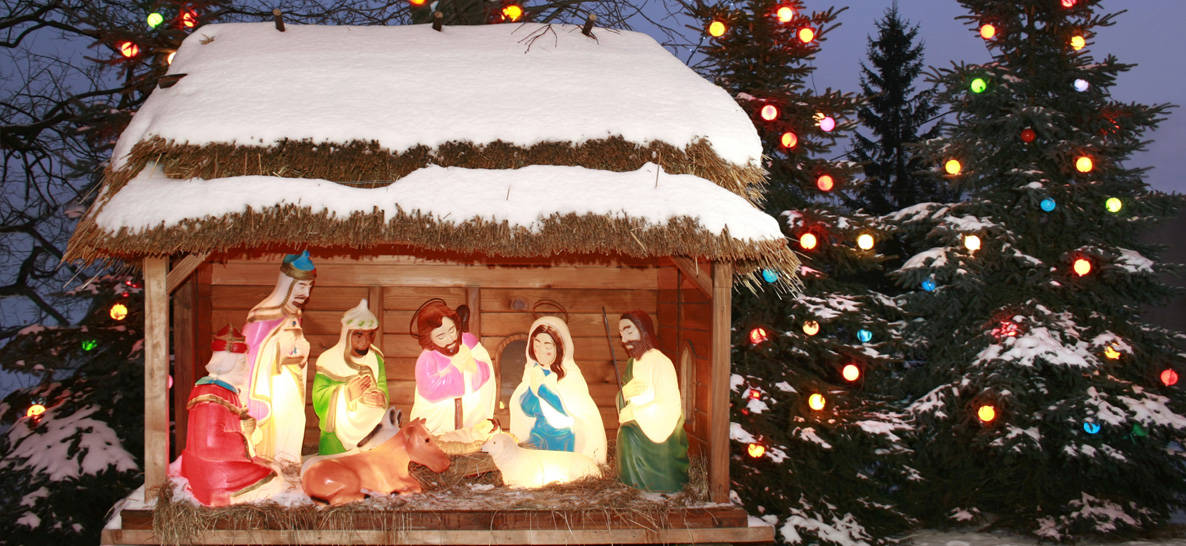
On Wednesday, Fox News’ Ainsley Earhardt raised eyebrows while discussing the fire that was set to her studio’s Christmas tree by mourning it as a symbol of unity. “It’s a tree that unites us. It brings us together,” she said. “It’s about the Christmas spirit. It is about the holiday season. It’s about Jesus. It’s about Hanukkah. It is about everything that we stand for as a country.”
Ainsley Earhardt on the Fox Christmas tree: "It's a tree that unites us. It brings us together. It's about the Christmas spirit. It is about the holiday season. It's about Jesus. It's about Hanukkah. It is about everything that we stand for as a country." pic.twitter.com/fV8Hg2juHI
— Bobby Lewis (@revrrlewis) December 8, 2021
Those comments attracted a lot of attention on social media, where many hastened to tell Earhardt that the Christmas tree started out as a pagan symbol. (Her comment that Christmas trees are about “Hanukkah” bizarrely received far less attention).
The idea that Christmas trees are pagan is a popular claim, as people seem to have a strange obsession with connecting all our modern Christmas traditions back to some ancient pagan festival. But the truth is, there is almost no evidence to back this claim up. As we’ve written about elsewhere, December 25th wasn’t actually an established pagan holiday before Christians came along and turned it into Christmas. The same thing is true of Christmas trees, which are a relatively recent invention with no clear ties to antiquity.
We do have a lot of historical examples of various ancient religious communities decorating trees (including, but not limited to, the Book of Jeremiah) but it’s a real reach to connect any of it to modern Christmas trees as we think of them. Scholars call this pareidolia — where we connect new data with something we already know about to make sense of it. We read about ancient people decorating trees, and we immediately think “like a Christmas tree,” whether or not there’s any actual connection. And, in this case, there’s not.
One very common myth you hear is that the ancient Romans used to put evergreen trees up in their homes to celebrate Saturnalia. It’s not entirely clear when and how this idea started to be spread, but there is just no historical record of the Romans doing this. (You can read Macrobius’ Saturnalia here, if you care to check for yourself).
Another common idea is that Christians borrowed the Christmas tree idea from the Norse custom, perhaps having something to do with Yggdrasil, the world-tree. That’s possible. Yggdrasil did play an important part in Germanic tradition. But we don’t have any historical evidence that there’s any connection between it and Christmas trees, so any ideas about that are empty speculation. As for the Germanic “Yule log,” the evidence actually suggests that it started out as a “Christmas log” and was later rebranded to celebrate “Yuletide” — the opposite of how the story is often told.
The truth is, our modern Christmas tree is just that: pretty modern. The earliest known example comes from France, where a 1576 sculpture shows an evergreen as part of a holiday celebration. Writer Spencer McDaniel theorizes that the evergreen may have originally been included in Christmas celebrations to symbolize Eden’s Tree of the Knowledge of Good and Evil — including both humanity’s Fall (the tree) and Redemption (Jesus) in the same holiday.
Christmas trees became popular among well-heeled German Lutherans in the eighteenth century, who decorated them with with things like nuts and berries. The Lutherans brought the practice to America where it flourished and became particularly popular among British royals like Prince Albert, Queen Victoria and Queen Charlotte. Apparently, it was briefly very trendy to decorate a tree with candles, but you can probably imagine the issues they ran into there. Fortunately, electric lights were invented shortly after and voila, you have the Christmas tree more or less as we know it today.
The thing that’s tripping up both Earhardt and her critics is this idea that Christmas trees or really any modern Christmas celebration is particularly ancient. Christmas, as we know it today, is fairly recent. In the Middle Ages, Christmas was a very different celebration — full of the sort of partying we generally would associate with Mardi Gras or Saint Patrick’s Day. The Protestant Reformation turned it into a more somber time of quiet reflection (in fact, those early Puritans briefly banned it altogether, since everyone was getting so rowdy).
The general sense of Christmas as a time of festive warmth and good cheer came later, popularized by the likes of Charles Dickens. And then we’ve got today’s hyper-commercialization of the season, which feels like a much better target for Christmas ire than a fictional pagan celebration that has nothing at all to do with the holidays.






















